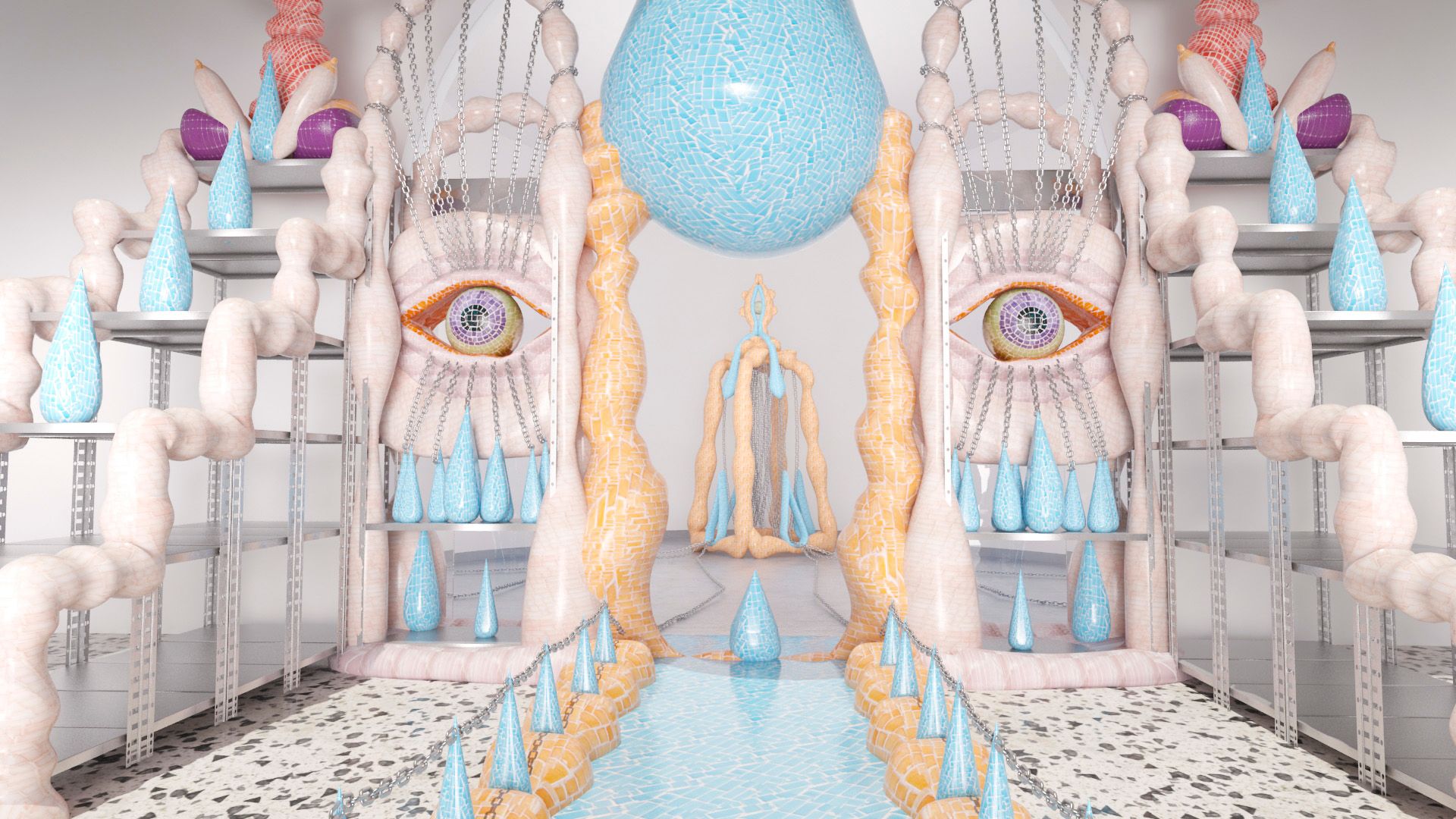The concept of the Hungarian pavilion at the 2022 Venice Biennale profoundly reflects the challenges of our times, a situation in which digital presence becomes almost mandatory as the only possible way of human connection. The monumental mosaic sculptures of Zsófia Keresztes materialize a merge of virtuality and reality. The shapes, made up of exposed body parts and covered with “pixels”, bring to mind the notions of interconnectedness, alienation and a search for identity. They produce a bizarre effect while radiating a one of a kind, ethereal aesthetic.
We talked to curator Mónika Zsikla and artist Zsófia Keresztes about their winning exhibition plan entitled After Dreams: I Dare to Defy the Damage.
Written by Lilla Gollob
How did the idea of the exhibition come to life? How did you find each other as work partners?
Mónika Zsikla: We’ve been friends for a long time, yet we’ve never worked together before. We started thinking about a joint exhibition a year ago, in January 2020, but, for reasons well-known, that one didn’t happen along with many other exhibitions. We already had some ideas, so the news about the extended submission deadline for the Venice Biennale found us at the best time possible.
Zsófia Keresztes: Yes, our friendship goes back many years now, and even though we haven’t worked together on any specific, completed projects yet, our many years of acquaintance provided a good base for developing such a large-scale plan. We’ve been in daily contact during the preparation for the competition, and still are since the announcement of results. We’ve also managed to foster very good dynamics in terms of collaborative work.
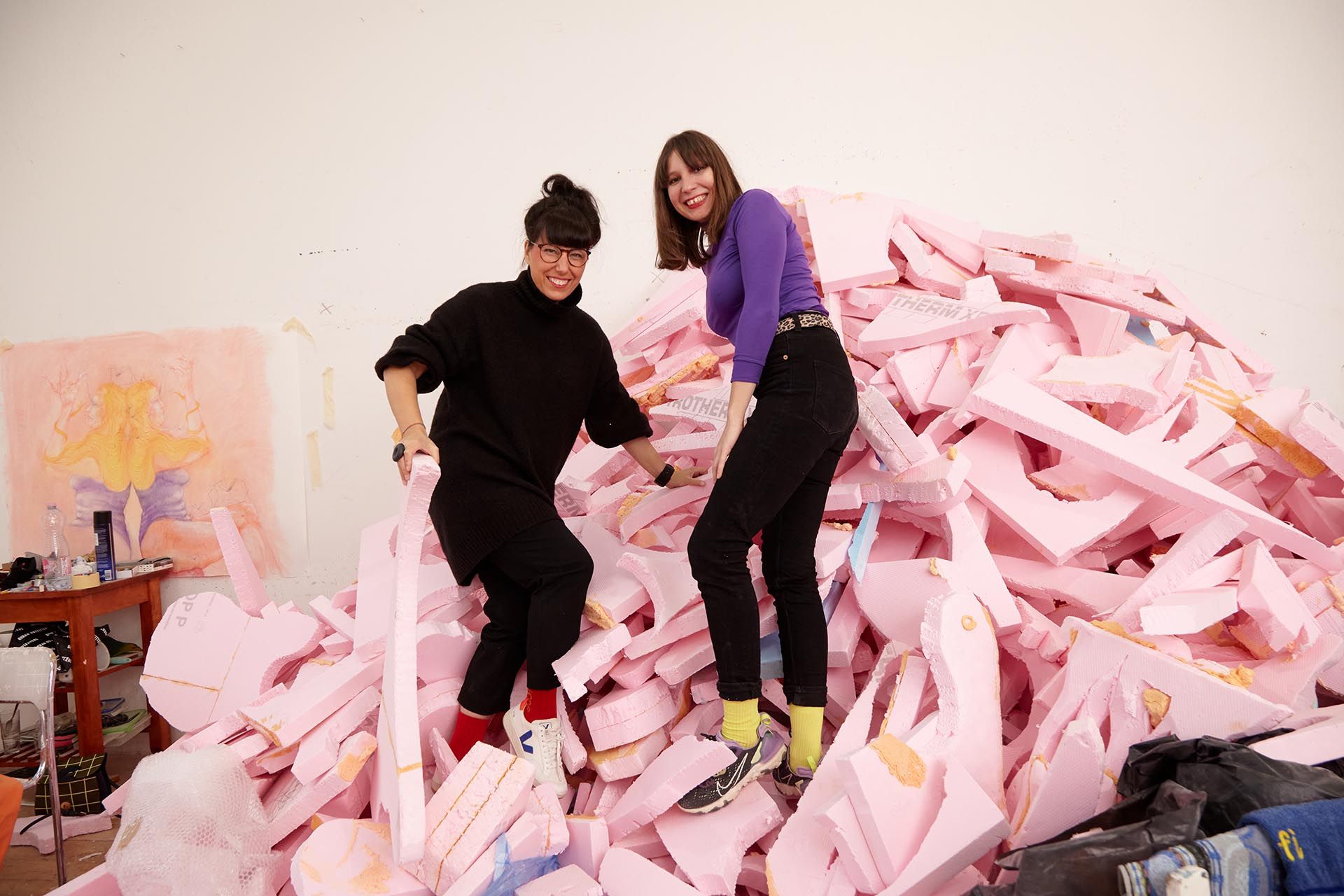
How did you feel when the results were announced?
M.Zs.: Maybe it was us who were the most surprised to hear about the jury choosing our concept. When art historian Géza Boros, the head of Ludwig Museum’s Venice Biennale Office, called me on the phone to announce the news, for long minutes he only heard sobbing on the other end, and then hung up after offering his heartfelt congratulations and telling me to call Zsófia with the good news.
Zs.K.: I am usually more of a pessimist in such situations. I didn’t even dare to hope that ours could be the winning application, even though I felt like we had put everything into the material we submitted. With the preparation time we had, it would have been almost impossible to make more out of this task. Ever since I heard the news, I’ve been constantly thinking about the exhibition, planning the next working phases in my mind. I’ve canceled all other projects and inquiries I had planned for 2021.
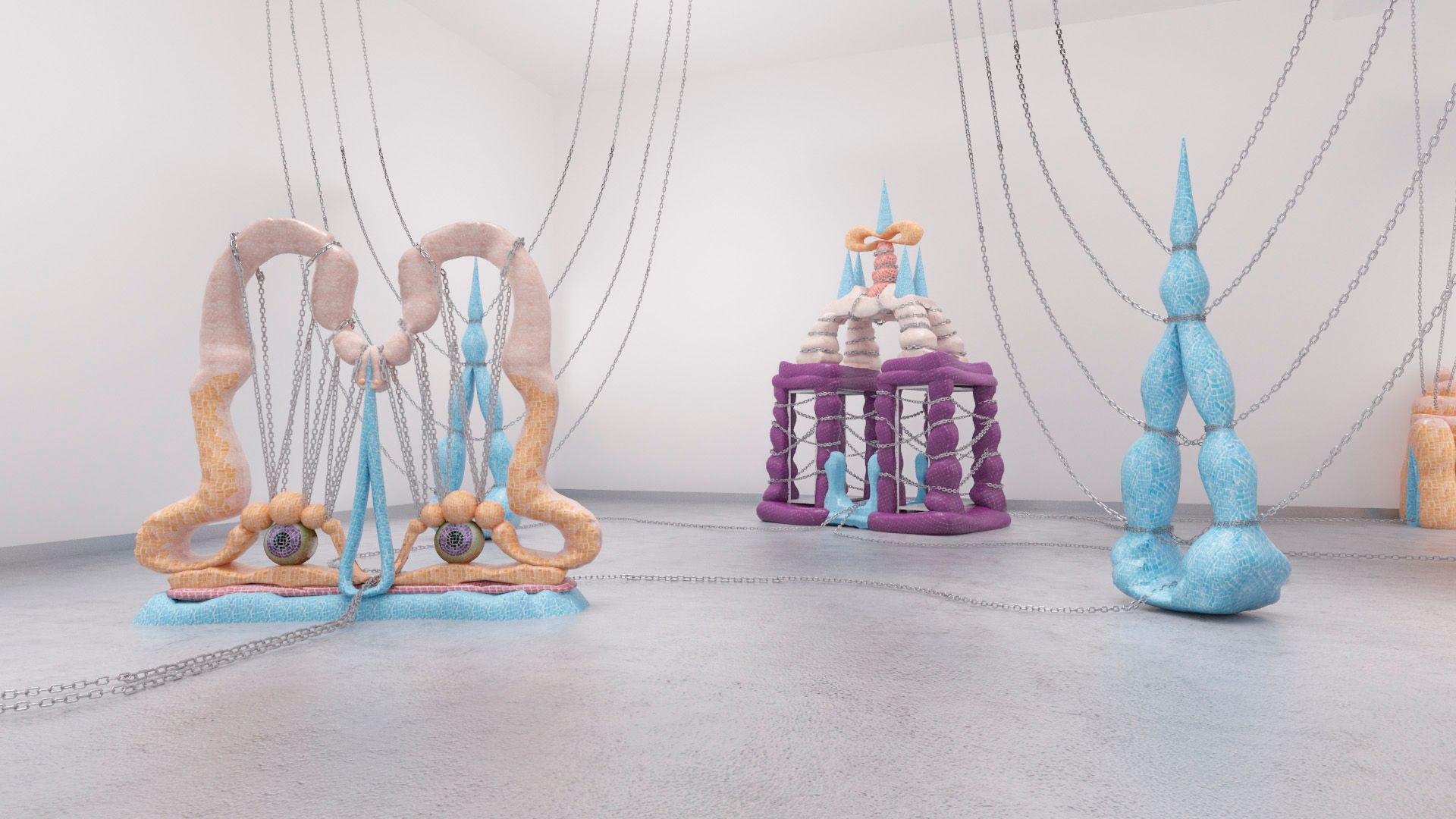
In the 110-year-old history of the Venice Biennale’s Hungarian pavilion, Zsófia is the third woman to have her own exhibition, and you’re the first duo in which both members, the artist and the curator, are women. How important do you think the female perspective is in the concept of your exhibition?
M.Zs.: I’m also really proud of Zsófi and the fact that she’s the third woman to represent Hungary in Venice, especially at such a young age. However, when developing our application concept, the “female perspective” didn’t come up at all. When we were finished and thought about what was it like to work with our partners, it occurred to us that the whole application material was prepared by women only. The beautiful visual plans were created by Orsolya Horváth, while the fantastic graphics are by DE_FORM studio (Enikő Déri and Nóra Demeczky). So the “female perspective” was not an aspect for us initially, it happened “by accident”.
Zs.K.: The day of our presentation was the first time the question popped up in my head: How many women exhibited in the Hungarian pavilion so far? I could only remember Hajnal Németh, so I quickly looked up previous female exhibitors. Although several women artists were already present in the form of group exhibitions, I was utterly shocked that, in addition, only Erzsébet Schaár was the only woman who had an exhibition posthumously in the 110-year history of the Venice Biennale. Although we didn’t put an explicit emphasis on femininity when compiling the application material, I think that a strong female perspective is featured in my sculptures organically. And this is apparent in the plans of the pavilion as well.
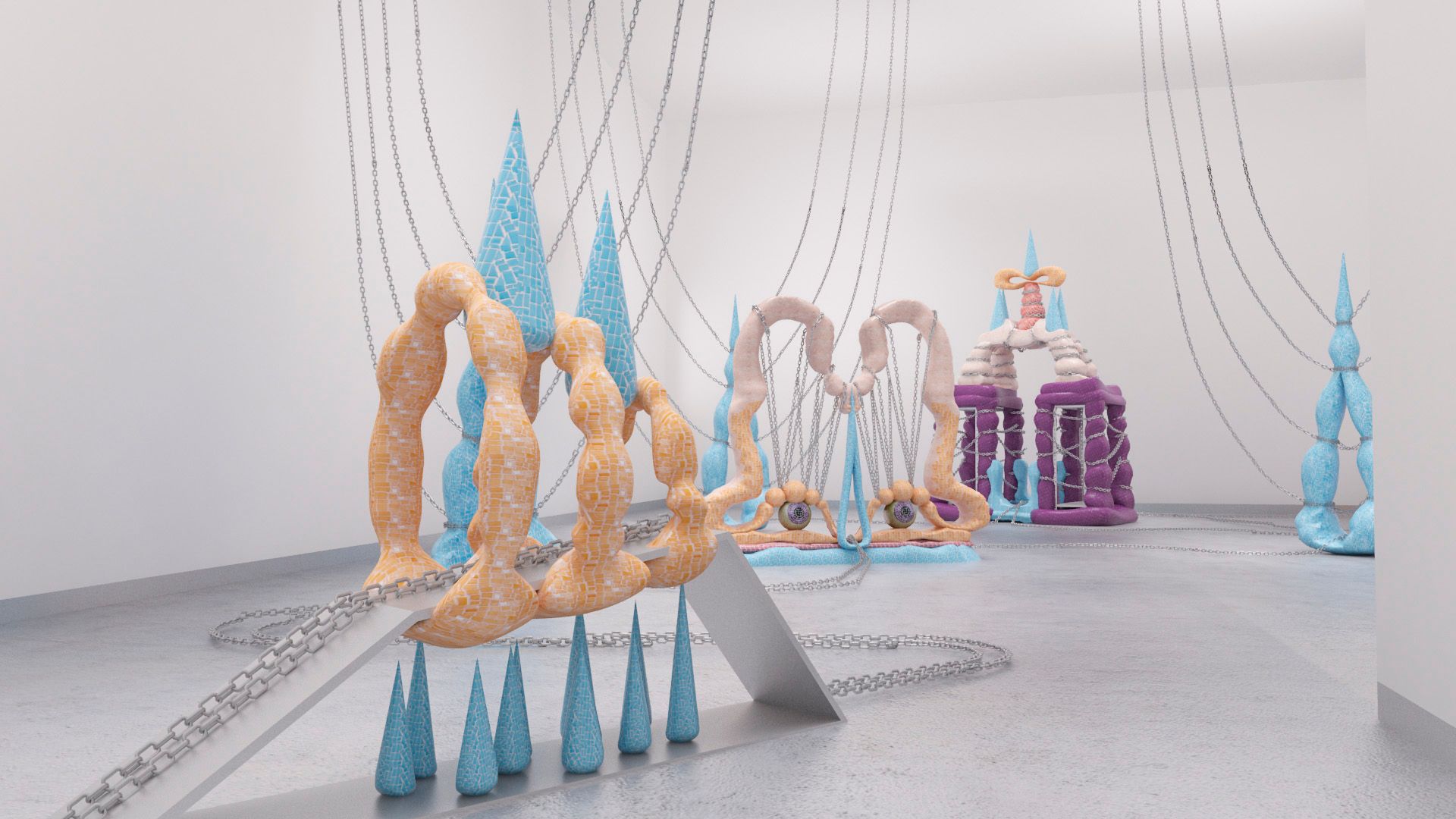
The focus of your exhibition After Dreams: Dare to Defy the Damage, is the search for human connection and finding identity. This theme takes on a new meaning in the virtual space that now interweaves more and more aspects of our lives. What kind of journey will you invite the pavilion’s visitors on? What are the most important thoughts, feelings and questions you want to convey?
M.Zs.: We hope that while exploring the group of sculptures, observers will ponder on questions such as: Are people able to break free from the prison created by themselves and the virtual nature of modern times? Can identity be found without the fragments of the past, without collective consciousness? In the exhibition—consisting of four larger units—the intermingling shapes of the 21st-century totem statues contemplate the past and the present’s ambiguous relationship to the future and the various possible circumstances of finding one’s identity.
Zs.K.: We dreamed up a path lined with bodies looking for their final form as a string of beads on an endless track of “rails”. The figures are actually freeze-frames depicting the different stages and possibilities of the formation of a personality. They work against themselves as well as for each other. They pulsate between destruction and creation, connection and detachment, while constantly interacting with each other.
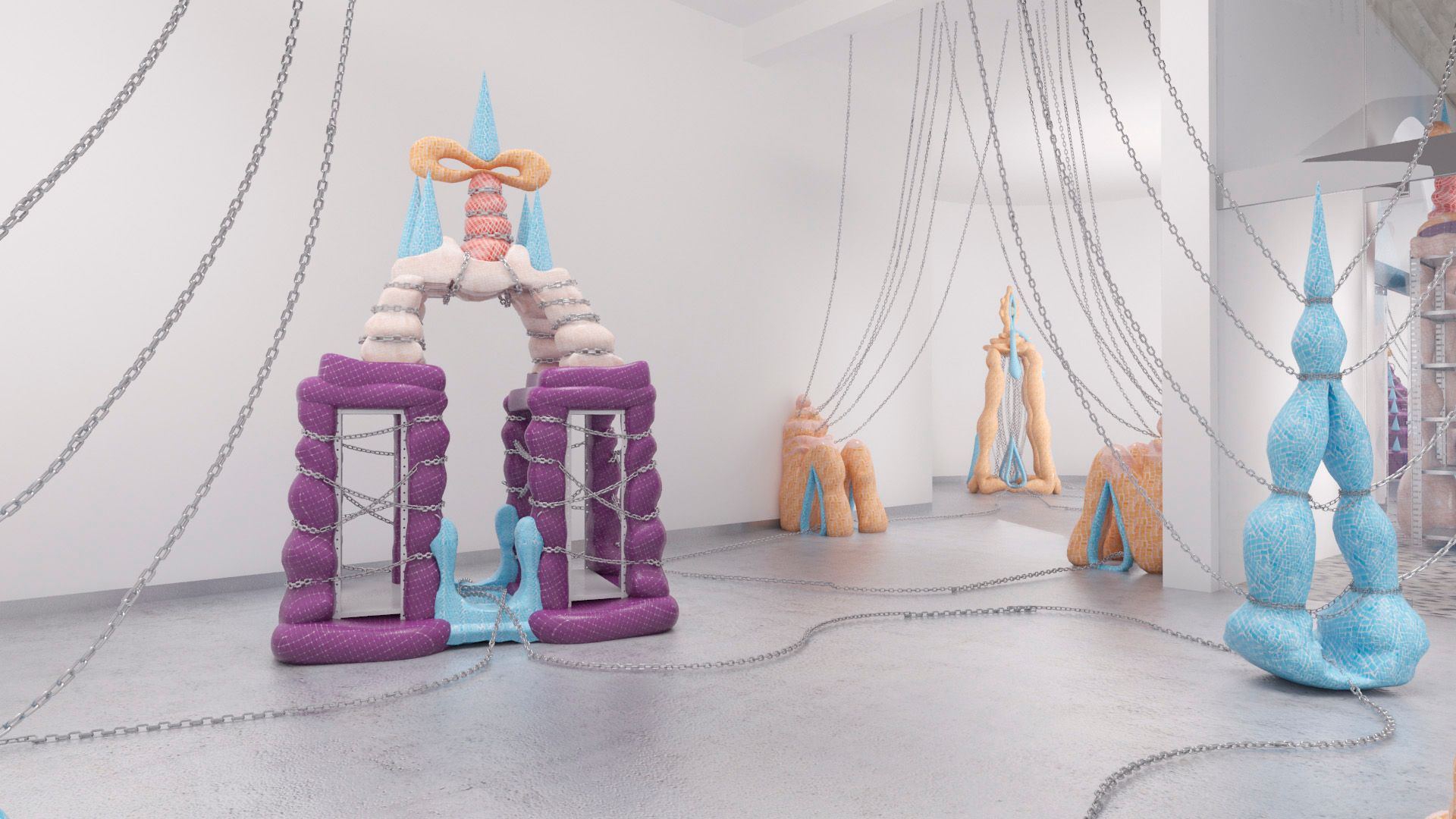
The sculptures planned for the pavilion and the huge altar are a continuation of Zsófia’s mosaic-covered series of sculptures she first started in 2017. The use of materials echoes, among other things, the enigmatic mosaic images on Géza Maróti’s Hungarian Pavilion, handed over in 1909. What does the mosaic symbolize for you?
M.Zs.: In the spirit of continuity, this was important to us, and we specifically address the enigmatic presence of the invisible relation between Géza Maróti’s mosaic images and Zsófia’s mosaic sculptures in the application material. Mosaic is an infinitely exciting technique; its historic significance and sacred connotations are almost inescapable. Zsófia’s embodied mosaics uniquely combine sensuality and virtuality, the analog and the digital, real and surreal, creating an archaic yet extraordinarily contemporary visual language. Besides all this, in our application material, we strived to tie in with the sacred aspects of the mosaic technique.
Zs.K.: For me, one of the most important properties of mosaic art is the fragmentation that divides these bodies into smaller pieces. These are like tiny panels that carry information: all of them are of different shapes and sizes, but they need to adapt to each other in order to form a coherent network. You always have to find the angle at which they can fit together the most perfectly. This system works similarly to the nature of human relationships.
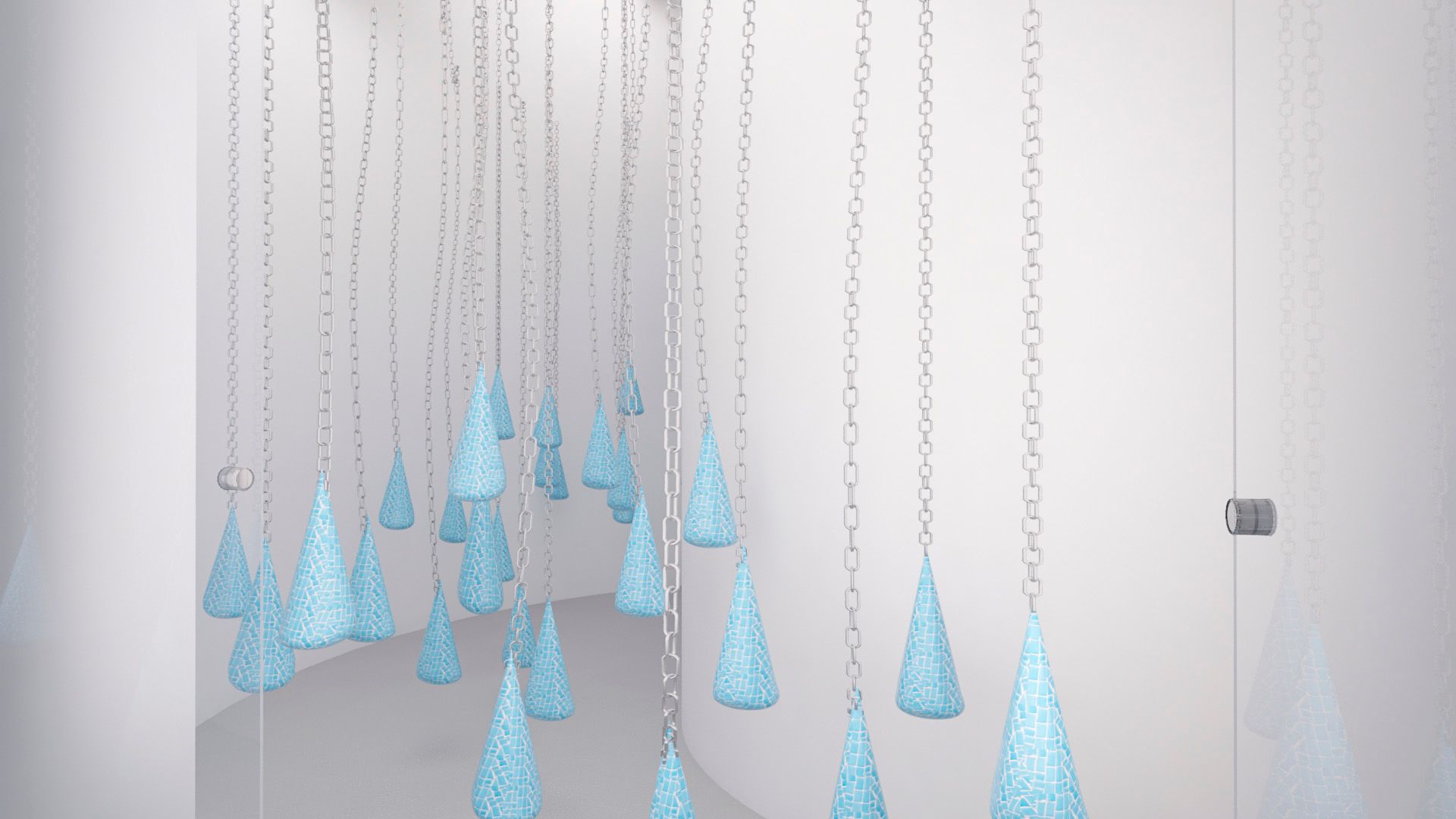
How are you preparing for the Biennale? Is it possible to plan at all in these uncertain times?
M.Zs.: We threw ourselves into work with tremendous momentum; we don’t have a B-plan at the moment. We adamantly believe that things will soon get back to normal, and the April opening of the 2022 Biennale proves to be a realistic idea.
Zs.K.: Currently, we’re only focusing on executing everything faithfully to our original concept. Of course, we might have to make compromises, but we will try to make the most of any new situation as well. Our most important task is to maintain this momentum for the next year or one and a half years, and the rest is not up to us.
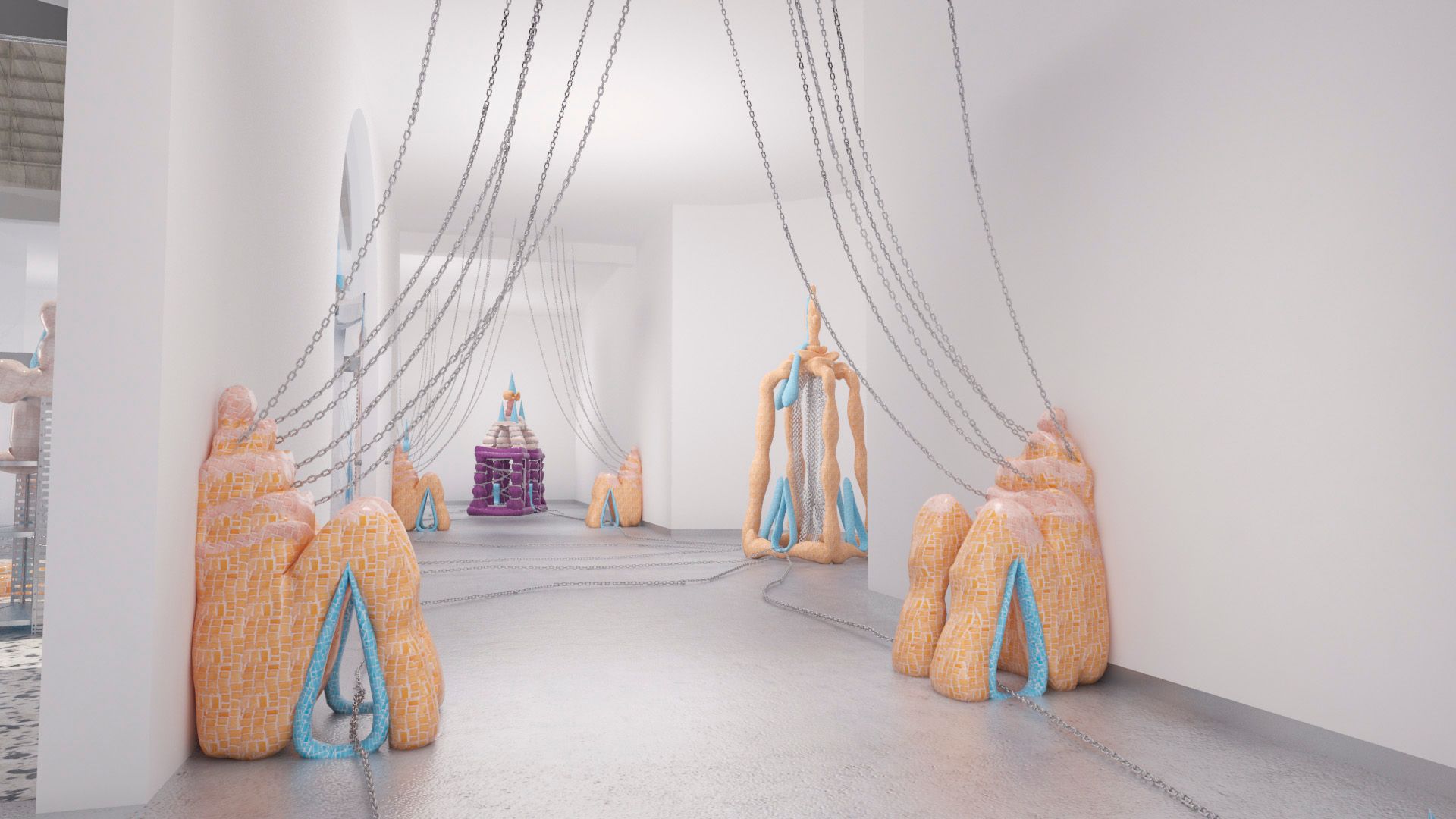
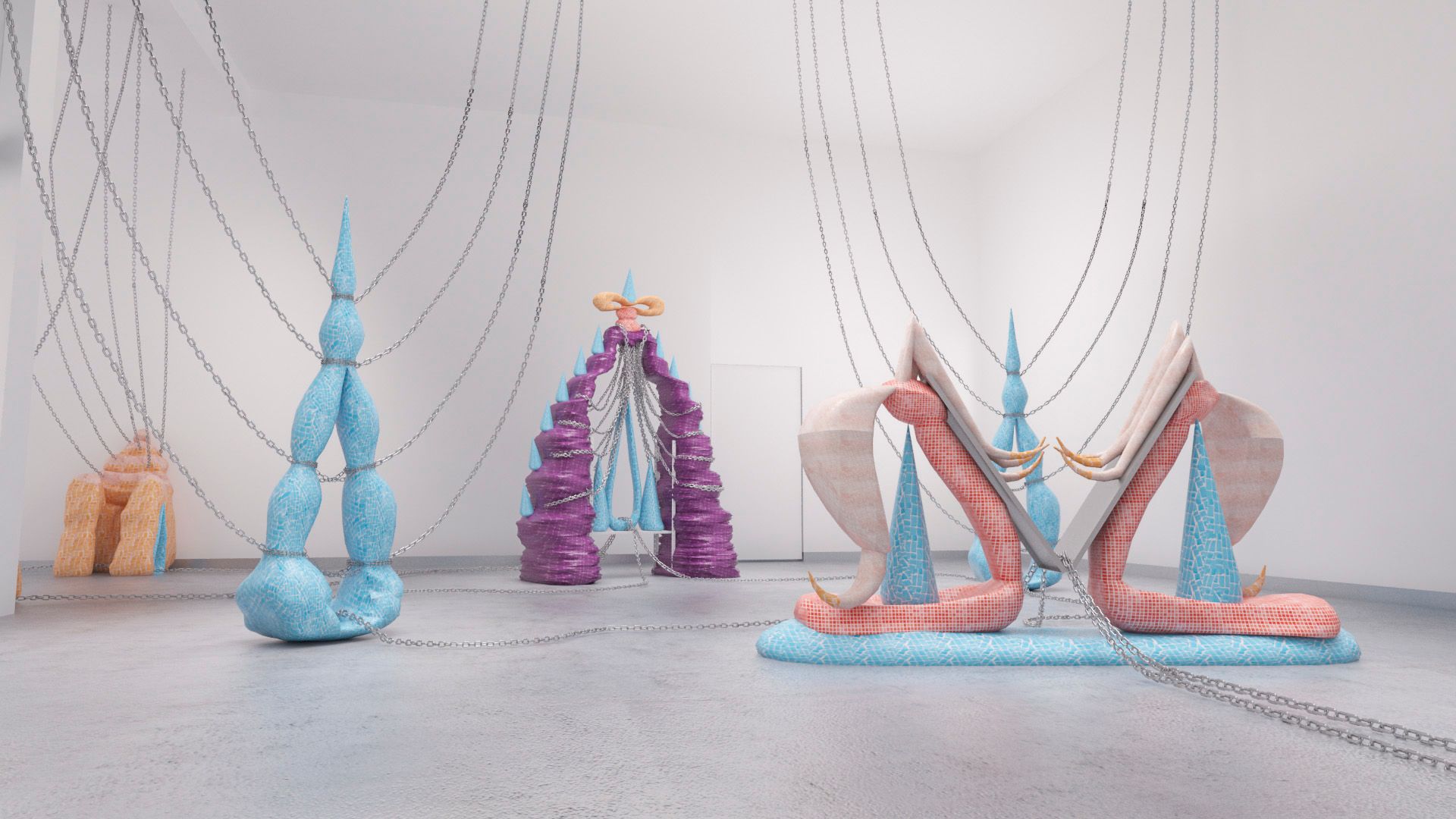
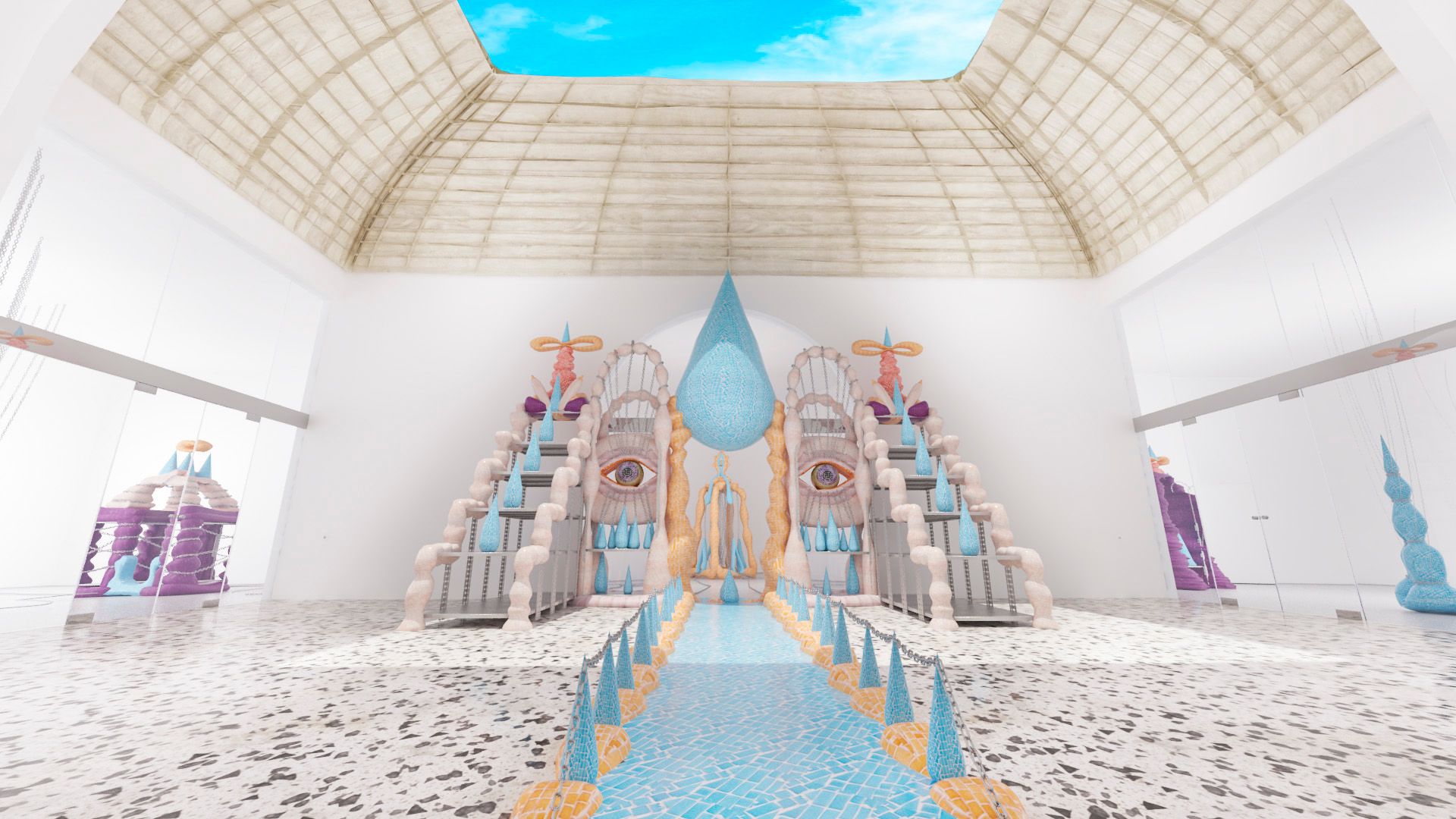
The fifteen entries submitted to the 59th Venice Biennale of Fine Arts can be viewed at this link.
Visual plans: Orsolya Horváth
Zsófia Keresztes| Web | Instagram
Ludwig Múzeum | Web | Facebook | Instagram
Venice Biennale | Web | Facebook | Instagram

Life in the clouds | A modernist house in California

The 2020 Beazley Designs of the Year are Announced










